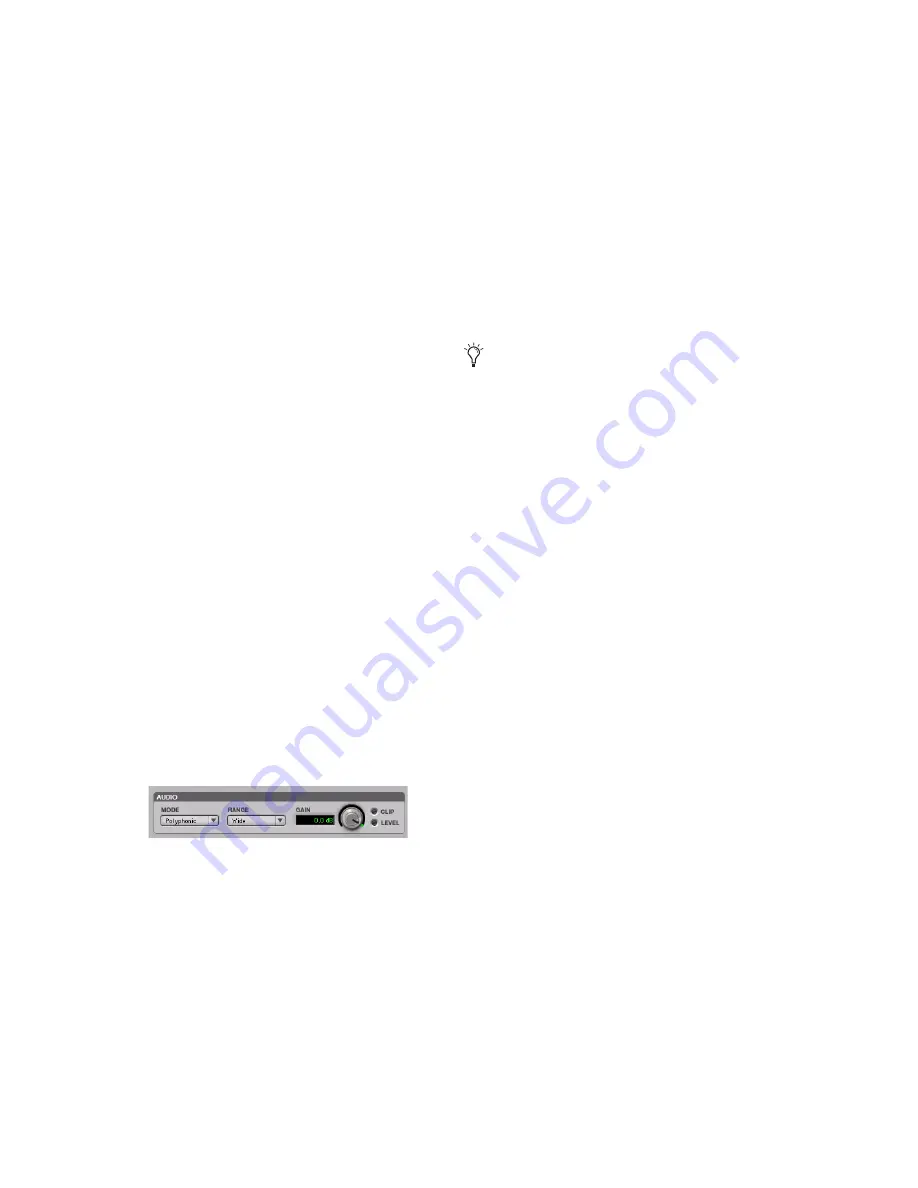
DigiRack Plug-ins Guide
108
Audio
Use the controls in the Audio section to
select the most appropriate time compression
and expansion algorithm (mode) for the type of
material you want to process, and to attenuate
the gain of the processed audio to avoid clip-
ping.
Time
Use the controls in the Time section to
specify the amount of time compression or ex-
pansion you want to apply.
Formant or Transient
Use the controls in the For-
mant or Transient section to adjust either the
amount of formant shift or the transient detec-
tion parameters depending upon which mode
you have selected in the Audio section. The For-
mant section is only available when Monopho-
nic is selected as the Audio Mode. The Transient
section is available with slightly different con-
trols depending on whether Polyphonic or
Rhythmic is selected as the Audio Mode.
Pitch
Use the controls in the Pitch section to ap-
ply pitch shifting. Pitch shifting can also be for-
mant correct if you select the Monophonic au-
dio setting.
Audio
The Audio section of Time Shift provides con-
trols for specifying the type of audio you want
to process and gain attenuation of the processed
signal to avoid clipping.
Mode
The Audio Mode pop-up menu determines the
type of TCE and pitch shift algorithm for pro-
cessing audio: Monophonic, Polyphonic,
Rhythmic, or Varispeed.
Monophonic
Use for processing monophonic
sounds (such as a vocal melody).
Polyphonic
Use for processing complex sounds
(such as a multipart musical selection).
Rhythmic
Use for processing percussive sounds
(such as a mix or drum loop).
Varispeed
Use to link time and pitch change for
tape-like pitch and speed change effects, and
post-production workflows.
Range
The Audio Range pop-up menu determines the
frequency range for analysis: Low, Mid, High, or
Wide. For low-range material, such as a bass gui-
tar, select Low. For mid-range material, such as
male vocals, select Mid. The high range control
is for material with a high fundamental fre-
quency, such as female vocals. For more com-
plex material that covers a broad frequency
spectrum, select Wide.
In Polyphonic mode, Wide is the default setting
and is usually best for all material when using
the Polyphonic audio type.
In Monophonic mode, Mid is the default setting
and is usually matches the range of most mono-
phonic material.
Time Shift plug-in, Audio section
Rhythmic mode uses transient analysis for
time shifting. If you select audio with no ap-
parent transients, or set the Transient
Threshold control to a setting above any de-
tected transients, Time Shift assumes a “vir-
tual-transient” every three seconds to be
able to process the file. Consequently, the
file should be 20 bpm or higher (one beat ev-
ery three seconds) to achieve desirable re-
sults. For material that has no apparent
transients, use Monophonic or Polyphonic
mode.
Summary of Contents for DigiRack
Page 1: ...DigiRack Plug ins Version 7 3 ...
Page 10: ...DigiRack Plug ins Guide 4 ...
Page 14: ...DigiRack Plug ins Guide 8 ...
Page 36: ...DigiRack Plug ins Guide 30 ...
Page 100: ...DigiRack Plug ins Guide 94 ...






























